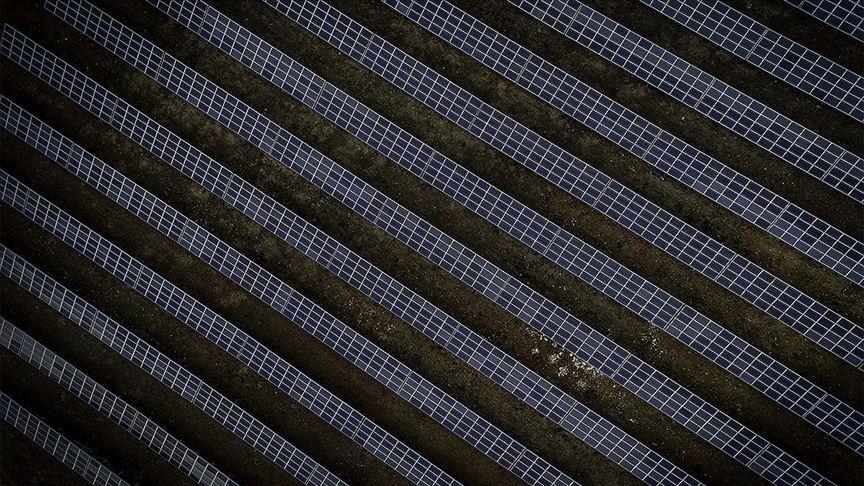Solar power is expected to be the new king of the electricity markets in the coming 10 years with an approximate 12% growth rate, a World Energy Outlook (WEO) 2020 report from the International Energy Agency revealed on Tuesday.
The WEO report found that renewables are set to grow rapidly in all of the four IEA's future energy scenarios in the report, with solar at the center of this new constellation of electricity generation technologies.
According to the report, solar photovoltaics (PV) are currently cheaper than new coal or gas-fired power plants in most countries with the support of policies and maturing technologies that enable cheap access to capital for renewables in leading markets.
Although oil demand is expected to fall on average by 8% and coal by 7% this year, solar power power capacity per year is estimated to expand by an average of 12% corresponding to 280 gigawatts of annual capacity additions.
Commenting on the solar energy sector growth, Fatih Birol, the IEA's executive director said, 'I see solar becoming the new king of the world’s electricity markets. Based on today’s policy settings, it is on track to set new records for deployment every year after 2022.'
'If governments and investors step up their clean energy efforts in line with our Sustainable Development Scenario, the growth of both solar and wind would be even more spectacular and hugely encouraging for overcoming the world’s climate challenge,' he noted.
The WEO-2020 report shows that strong growth of renewables needs to be paired with robust investment in electricity grid systems as these will prove to be a weak link in the transformation of the power sector without enough investment.
Out of the global electricity demand that is set to grow by 20% up to 2030, renewables will meet 80% of this demand growth, the report said. It noted that hydropower remains the largest renewable source but solar is the main source of growth followed by onshore and offshore wind.
- Low economic growth is not low-emissions strategy
The report attributed the huge drop in global energy demand and investments due to the COVID-19 crisis, which has caused more disruption than any other event in recent history.
Birol stated that despite a record drop in global emissions this year, the world is far from doing enough to put them into a decisive decline.
The economic downturn has only temporarily suppressed emissions, he said but added that low economic growth is not a low-emissions strategy but rather one that would only serve to further impoverish the world’s most vulnerable populations.
He recommended that only through faster structural changes would the way energy is produced and consumed break the emissions trend for good.
“Governments have the capacity and responsibility to take decisive action to accelerate clean energy transition,” he said.
Lockdowns in several countries to prevent the spread of COVID-19 were cited by the IEA as the main reason for the decrease in global energy demand with cancelled flights, the drop in transport usage and with millions of people working from home.
One upshot of this slowing economic activity is the forecast of a 7% drop in global energy-related emissions.
'Global emissions are set to bounce back more slowly than after the financial crisis of 2008-2009, but the world is still a long way from a sustainable recovery,” according to the IEA.
To counter the rise of emissions, the agency recommended a step-change in clean energy investment, which would offer a way to boost economic growth, create jobs and reduce emissions.
“This approach has not yet featured prominently in plans proposed to date,' the report said except for the EU, the UK, Canada, Korea, New Zealand and a handful of other countries.
- Energy investments to fall by 18%
According to the report, emission reduction efforts need to focus on existing energy infrastructure like coal plants, steel mills and cement factories or otherwise, international climate goals will be pushed out of reach regardless of actions in other areas.
'Detailed new analysis in the WEO-2020 shows that if today’s energy infrastructure continues to operate in the same way as it has done so far, it would already lock in a temperature rise of 1.65 degrees Celsius,' the report said.
The report emphasized the need to put clean energy investment at the center of the economic recovery packages so the world can be on track for a resilient energy system that can meet climate goals.
According to the WEO, global energy investments will also decrease by 18% this year due to lower demand, economic uncertainties and the weak balance sheets of companies.
In one of the four scenarios presented in the WEO report, the Stated Policies Scenario, which reflects today’s announced policy intentions and targets, the world's energy demand rebounds to its pre-crisis level in early 2023 but this recovery does not happen until 2025 in case of a prolonged pandemic and deeper slump.
'Slower demand growth lowers the outlook for oil and gas prices compared with pre-crisis trends. But large falls in investment increase the risk of future market volatility,' the report underlined.
By Nuran Erkul Kaya and Gulsen Cagatay
Anadolu Agency
energy@aa.com.tr


